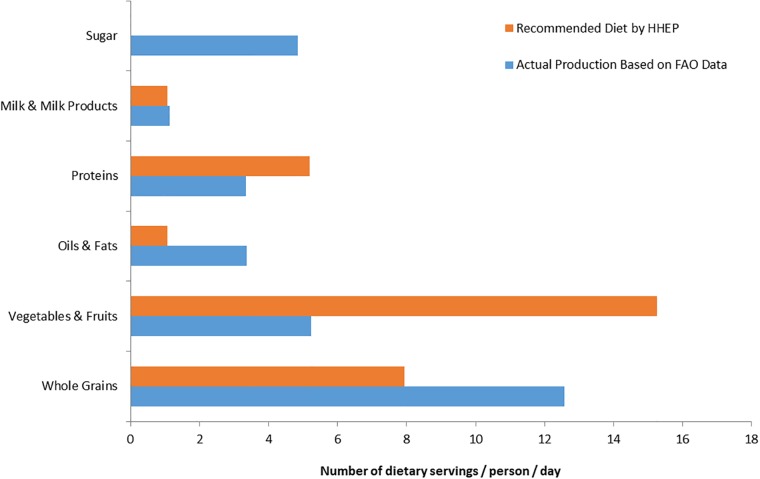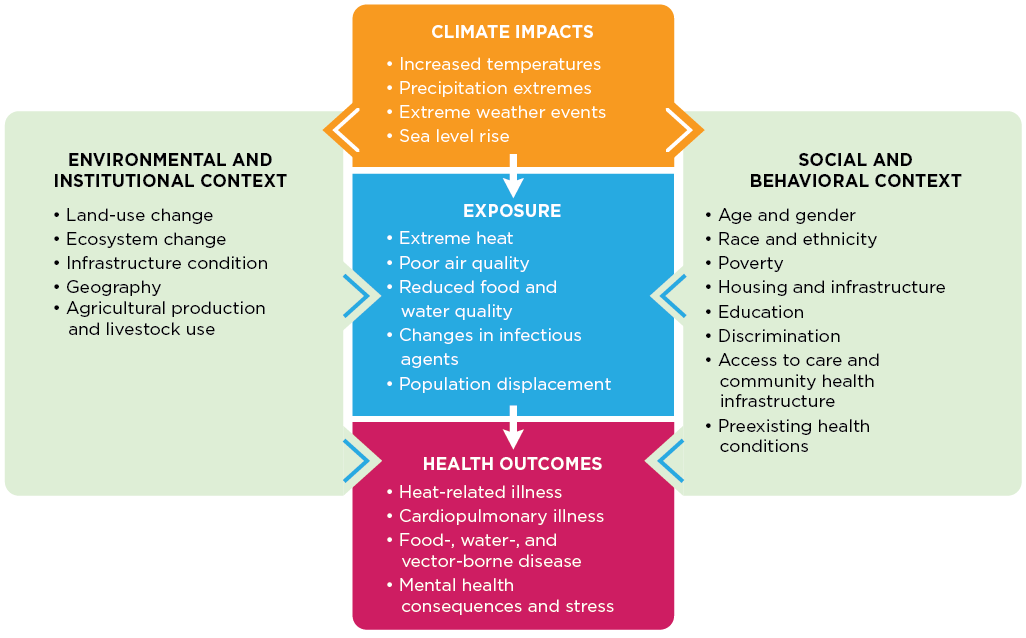We all enjoy nature in one way or another – strolling along greenways, boating on rivers, resting under a shade tree, or maybe just savoring the taste of honey. But not everyone thinks deeply about the role nature plays in our world’s economic prosperity.
Nature supplies an abundance of natural capital – living things, minerals, water, light and air. Society has built sophisticated infrastructures to transform all this raw natural capital into the food, drink and energy we use for survival, employment, income and trading. From a financial perspective, think of it like this: Equity markets reflect the accumulated value, IP and expected future cash flows of the infrastructure fed by the earth’s stock of natural capital.
Unfortunately, we’ve taken for granted the bounty of earth’s natural capital for far too long. Partly because it works behind the scenes – and doesn’t demand a paycheck – we’ve assumed that nature would always be there, working to supply the raw materials we need.
What happens if our unrealistic demands, coupled with modern-day stressors, stretch nature past its capacity to produce sufficient raw natural capital?
Today, wildfires, floods, pandemics and the impacts of excess emissions curtail our ability to extract dividends from nature. Future cash flows, or value, from natural capital – and our future well-being – are all at risk.
Let’s work together to create abundance, reduce deficits
Society has a long history of overcoming natural disasters. Yet the immense scale of human presence and modern infrastructure have changed the scope of the problem. Today we’re living in the “Anthropocene” era, where human activities have a primary influence on the environment. The international scientific community is increasingly unified in raising alarming calls to action for climate remediation.
To achieve that goal, we need an infrastructure that can be both retrofitted and upgraded to produce more nutritious food, clean water and renewable energy. Creating greater value for people and our planet’s natural capital resource stockpile requires systems – and real-time intelligence – to evaluate the functioning of this trifecta of natural capital assets across the infrastructure. Companies, governments, and even individuals must respond by doing their part to create abundance when possible – or, at least, to limit deficits within our natural capital assets. This needs to become a key function of doing business.
Technology presents part of the answer.
Retrofitting our infrastructure with analytics
Low-cost digital tools can help increase efficiencies and resiliency in supply chains. At the same time, we can begin to fundamentally alter consumption habits around food, water and fuel. For multiple industries, we can align the external environmental impacts of production with the fundamental values underlying the paradigm of natural capital.
We already have the capacity – and the data – to not just maintain but to increase our natural capital stock. Examples of several promising approaches are:
- Building soil health and ecosystem function.
- Improving animal and human nutrition.
- Using biodiversity knowledge to invest more astutely in its creation.
- Creating flexible, renewable and resilient energy infrastructure.
The first move should be to achieve efficiency. This approach can establish a data framework that answers hard questions around a circular economy and how to regenerate land, water and the atmosphere. With SAS Analytics, businesses and governments alike can achieve supply chain resiliency and adopt the conservation efforts required for an uncertain future.
See how analytics helps retrofit our infrastructure to sustain it for the future.Food: Effects of land and agricultural practices
Activating natural capital in farmland requires growing more high-quality foods with nutritious calories and eventually eliminating many of the negative impacts on our land from fertilizer, monoculture and improper land management. Today, land resources are poorly used. Soil health is at best stable. In the worst cases, agricultural practices are hugely detrimental to natural capital stocks (such as removing Brazilian rainforests to cultivate soy or corn).

Data is increasingly available from all aspects of farming, which can increase efficiency in the future. By ingesting real-world data, SAS supports decisions at the grower, packer and manufacturer levels – driving improvements in product quality, soil health, water use and more. Our work to support advanced seasonal production forecasting reduces food waste while also making high-value, perishable crops more profitable. The data underpinning our forecasts also helps companies define key quality and sustainability drivers to further differentiate their crops, strengthening brand reputation.
Technology allows us to monitor the whole earth
Investing in natural capital through land also requires using new and reinvented methods of animal nutrition, alongside crop and horticultural production. This approach helps increase soil health and water retention while reducing pesticide and fertilizer use.
We have the tools and experience to speed learning and put new farming research into action to achieve regenerative paradigms in agriculture. And of course, farming is always tied to its neighborhood. So, as we’ve worked to quantify deforestation in the Amazon, we’ve also evaluated biodiversity – a key asset that’s tied to the landscape.
Today, technology allows us to monitor the whole earth. Using analytics, we can turn land use into a cost-effective tool that can help us improve biodiversity, water and resource management, and achieve targeted outcomes, like carbon sequestration.
Read how Boragen uses AI for breakthrough innovations in crop scienceWater: Effects of weather and pollution
Agriculture consumes about 70% of our freshwater each year. Keeping the soil healthy is key to managing our water supplies and usage. Soil can hold a tremendous amount of water when it is healthy and resilient – but when unhealthy, soil gets eroded by water. This causes traumatic floods downstream.
We can improve the functional interplay between land and water through better agricultural practices. At the same time, we need to monitor streams, rivers and wetlands to keep them functioning as they should provide appropriate habitats, flood mitigation and cooling – along with recreational enjoyment.

Water is one of the only ingredients used in the manufacture of every product. The waste from water use – in farming, industry, energy production and more – too often returns devalued by pollution to the natural capital stockpile. Even simple lawn fertilizer is widely overapplied. This causes nutrient pollution and algae bloom in streams, rivers and lakes through storm drains around the country.
These are some of the reasons SAS monitors entire hydrological zones while attributing changes in pollution and streamflow to point sources. With analytics, we can map and integrate water quality data to:
- Monitor the impact of contamination.
- Model conservation programs’ impact.
- Establish cause and effect between incentives and regulation – resulting in better ecosystem services.
Efforts like these support governments’ critical works for the public. Analytics also helps us balance human need with natural capital stockpiles.
See how IoT networks and forecasting models help us plan for infrastructure – like parks, buffers and reforestation – to avoid floods.Energy: Effects of drawdown, emissions
The emissions from “manufacturing” energy – the most well-publicized source of greenhouse gases – include cars, diesel engines, and coal and gas power plants. These emissions are being targeted by regulators because of their detrimental impact on our natural capital. There is even work underway to draw down existing carbon in the air caused by more than 100 years of intensive fossil fuel use.

Economics, too, is edging fossil fuels out of the market due to the cost-effectiveness of renewables and adjacent efficiency gains. For instance, investments in renewable infrastructure provide greater shareholder returns than comparable investments in oil and gas today. That’s important since the market has little ideology beyond future cash flows.
RethinkX frames the conversation around the implications of disruption among multiple industries. For example, an executive summary of the report, “Rethinking Climate Change” states: “Solar, wind and batteries will disrupt coal, oil and gas. Autonomous electric vehicles providing transportation-as-a-service will disrupt internal combustion engines and private vehicle ownership.”
Transitioning to a new energy future
Moving from a centralized, fossil fuel-intensive energy sector to a decentralized series of renewable generation and storage platforms requires resilience and flexibility. The shift also relies on streaming data to inform management decisions in real-time. SAS helps with the transition and upkeep of this new energy future.
Through machine learning tools, SAS can forecast a solar array placement based on orientation and weather data that predicts solar energy production under various conditions. Our work also helps firms with stranded asset infrastructure, like coal plants. With analytics, these firms can forecast the economics of decarbonization efforts while learning how to create value with new distributed and dynamic systems. We’re even exploring ways to document land use for carbon sequestration marketplaces that can change the atmosphere itself.
Analytics protects our stock in earth's natural capital
The food, water and energy that power our world are wholly dependent on natural capital assets. Analytics is a way to protect our stock in these assets so we’ll continue to receive dividends from these resources. We need expert effort to align the right information – based on data from new technology – with truthful assessments and scientific models about our natural capital assets and their valuations.
As we create a new infrastructure to regenerate the planet, we must tie production from our most critical industries, indeed our life support systems, with analytics. Only then can we understand and influence flows in natural capital. When combined with collective cooperation, investment and smart regulation, analytics can foster a brighter future and healthier world for all.
Learn how digital transformation in agriculture and consumer goods can fight climate change

1 Comment
Companies need to work to support natural capital at the edges of their supply chains!